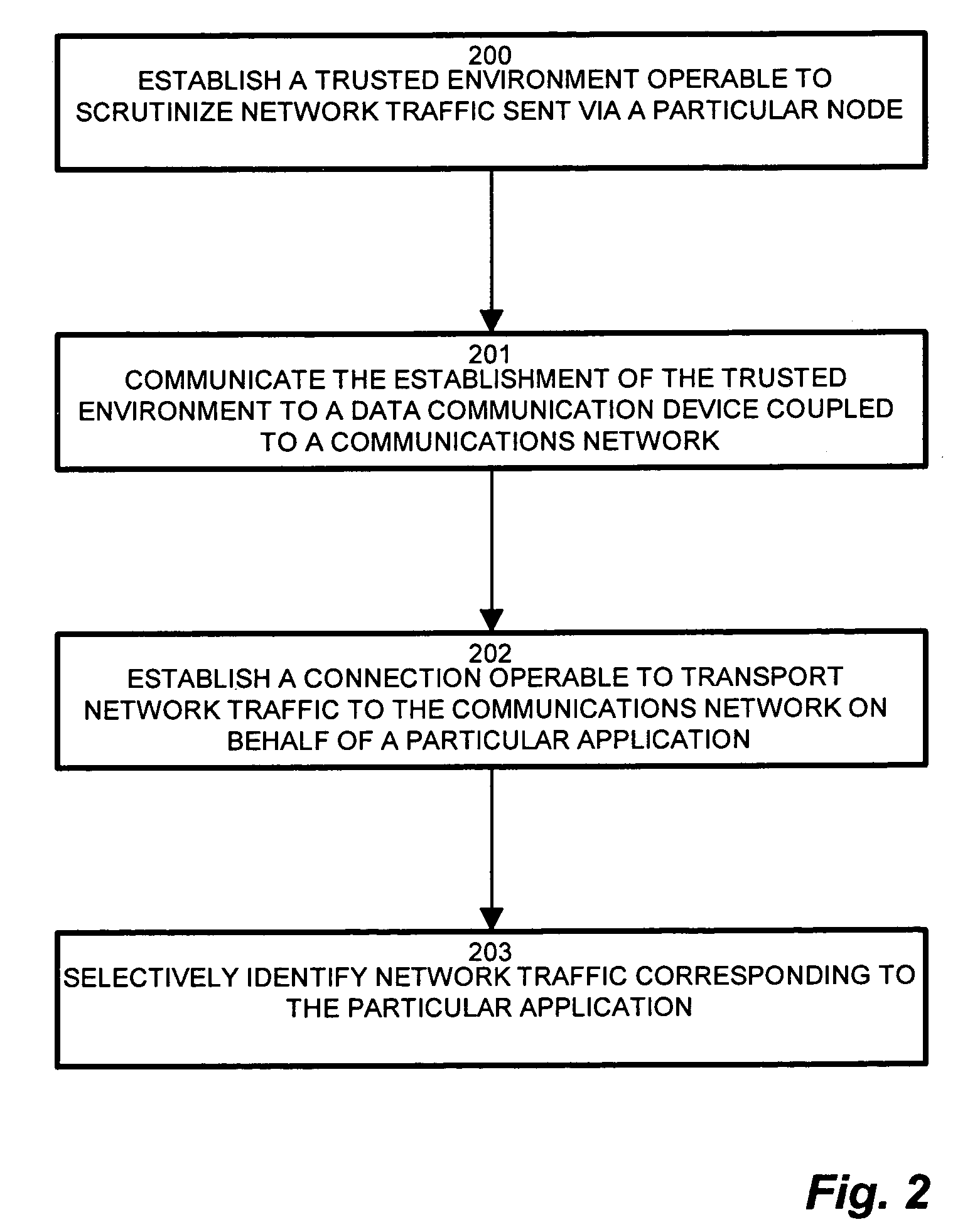Methods and apparatus for trusted application centric QoS provisioning
a technology of trusted application and provisioning, applied in the direction of instruments, digital computers, computing, etc., can solve the problems unable to employ conventional qos marking mechanisms, and unable to verify the proper use of qos marking fields by end-user devices. , to achieve the effect of extending the trust barrier or trust poin
- Summary
- Abstract
- Description
- Claims
- Application Information
AI Technical Summary
Benefits of technology
Problems solved by technology
Method used
Image
Examples
Embodiment Construction
[0026]Configurations disclosed herein combine deployment of a QoS proxy on an end node is to control DSCP markings for all packets transmitted, and implementation of a stateful reference monitor which tracks behavior and enforces security across different types of resource access. The exemplary configuration described below specifies a mechanism for providing a trusted QoS proxy on an end-node system. The arrangement includes a QoS proxy which implements security features, via the security agent, protecting both the applications and the operating system (OS), to ensure both the application usage as well as the QoS markings may be considered trusted by the network. Providing the trusted proxy includes detecting a network “connection” being established (including TCP, UDP, etc.), a policy based rule check (which results in an administratively specified DSCP marking for this session), tracking all packets for this “session” and marking them according to the specified marking policy. In...
PUM
 Login to View More
Login to View More Abstract
Description
Claims
Application Information
 Login to View More
Login to View More - R&D
- Intellectual Property
- Life Sciences
- Materials
- Tech Scout
- Unparalleled Data Quality
- Higher Quality Content
- 60% Fewer Hallucinations
Browse by: Latest US Patents, China's latest patents, Technical Efficacy Thesaurus, Application Domain, Technology Topic, Popular Technical Reports.
© 2025 PatSnap. All rights reserved.Legal|Privacy policy|Modern Slavery Act Transparency Statement|Sitemap|About US| Contact US: help@patsnap.com



